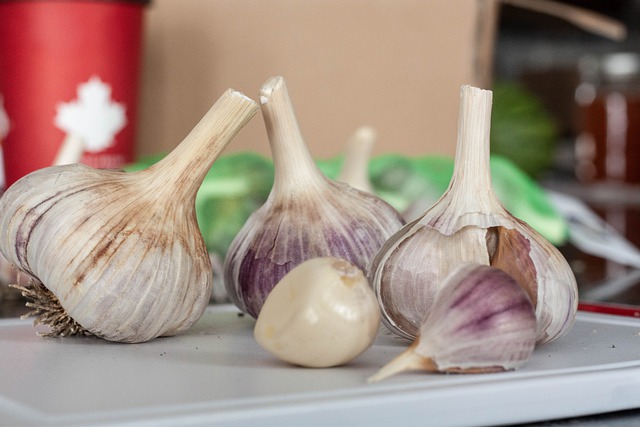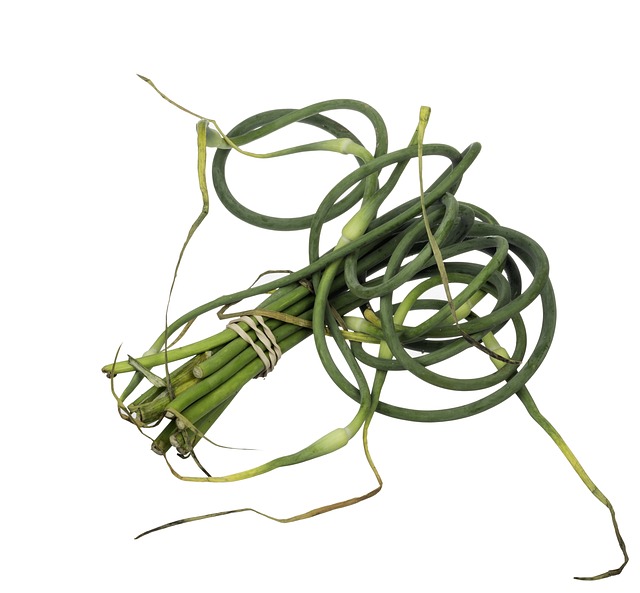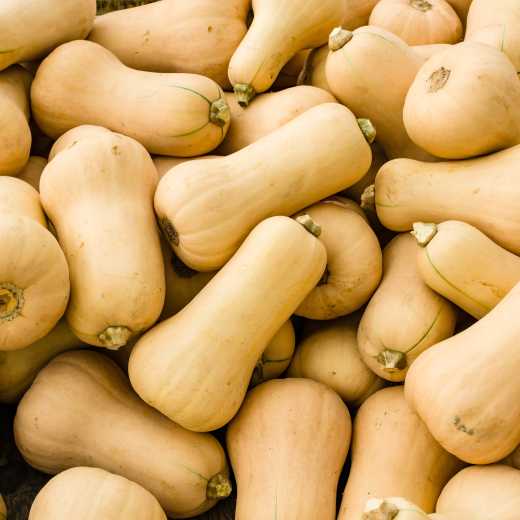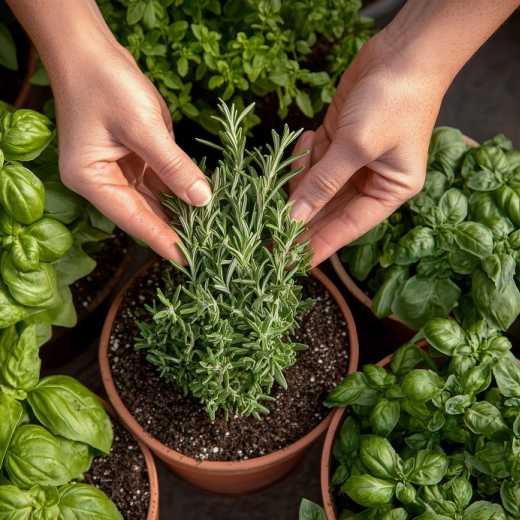Fall is Garlic Time
As fall approaches, thoughts turn to garlic. Growing your own garlic is easy, and the cloves are tastier than what you purchase in a grocery store. Typically, garlic is planted in the fall. You may find “seed” stock (the garlic you buy to plant, not the garlic you buy in a grocery store to eat) at independent garden centers, farmers markets, online seed companies or specialty garlic companies. If garlic at your favorite seed company is sold out, try a company that specializes in garlic because they have more inventory.
There are about 200 garlic names so it may be hard to choose which one you want to grow. Basically, there are two categories: “softneck” and “hardneck.” The “neck” is the woody central area of the bulb where the flowering stalk or scape emerges the following spring. Softnecks do not produce the scape. Hardnecks produce the scape, which some people like to cut and cook even though this would result in a smaller bulb harvest later in the summer. Because softnecks do not have this woody stem, they are easy to braid for storage. Softnecks mature earlier and have a longer storage life than hardnecks. Softnecks produce large bulbs with the highest number of cloves in various sizes—some small and some large. These are not easy to peel when you want to use them in the kitchen but, as months pass, they become easier. Hardnecks have a smaller number of cloves but larger and of uniform size, arranged in a single layer around the stalk, and are easy to peel.

The ease of peeling is related to storage; if the clove is easy to peel it is because the peeling is not on tightly, hence air can enter and degrade the clove faster. If it is hard to peel, it is because the peeling or wrapper is on so tightly that air cannot enter and cause the clove to dry out. However, as months pass, moisture is lost, the wrapper loosens a little, and the cloves become easier to peel.
Within softnecks (Allium sativum spp. sativum), there are the artichoke and silverskin types, which can store for 8 months. The artichokes have three to five overlapping layers of cloves in various sizes that create a bumpy appearance. The silverskins have smooth white scales, tightly wrapped cloves, and uniform bulb sizes. These are the most popular for braiding.
The hardnecks (Allium sativum spp. ophioscorodon) store for 4 months. There are rocambole (large, easy to peel cloves), porcelain (largest but few cloves), and purple stripe (bright purple streaks and blotches).
After selecting which type of garlic you want, a hardneck or softneck, your selection will determine how often or how much you will use the garlic in your cooking, storage needs, and your preference for heat and flavor. It may be helpful to read catalog descriptions, such as “sweet and mild flavor when cooked,” “white hot” garlic, “high sugar content, good for roasting,” “rich, sweet and caramelly when roasted,” or “pleasant flavor with a mild spicy zing.”
Regardless of the type, all garlic is planted, harvested, and cured the same way. Garlic needs rich, well-drained soil. You can grow garlic in a garden bed, raised bed, or container if the depth is at least 8 inches, preferably 12 inches. Large fabric containers or whisky barrels are possibilities.
Usually, garlic is harvested in June or July when the rest of the garden is in full swing, so think of what will replace that gap in the garden. For example, in the fall, you can insert cloves along the perimeter of a large container. In the summer, you can either harvest the garlic and plant summer annuals, or you can plant annuals in the late spring and still pull the garlic in the summer and not disrupt the annuals.
Because the plants are tall and narrow, you can fit them in a row in front of your flower bed or in front of shrubs, and harvesting should not create an unsightly gap. Many gardeners grow garlic with their rose bushes. It is said that garlic helps keep roses pest and disease free and they do not compete or crowd out roses.
Garlic is a heavy feeder. Depending on where you will plant, you may want to first add compost or manure to your soil in the fall. In the spring, feed with nitrogen via bloodmeal, compost tea, or cottonseed meal in April and May. Garlic also needs full sun, and the area should be kept weed free. Some gardeners mulch to prevent weeds and to prevent frost heaving.
To plant, gently pull apart the garlic to separate the cloves and examine each clove to make sure it is healthy. Don’t peel each clove, but if one is discolored or mushy, throw it away. Plant only healthy cloves, bottom down, pointed end up, about 2 inches deep. Space about 6 inches apart. Large cloves will create large bulbs. The clove will start to grow in the fall, and you should see foliage in the fall that will remain over winter. In the spring, the foliage will continue to grow.
If you planted hardnecks, you will see the scapes or the flowering stalks rise and curl in late spring. Many gardeners cut and eat scapes resulting in smaller garlic bulbs. If you want larger bulbs, cut the scapes off when they first emerge. Softnecks do not produce scapes. Harvest the bulbs when half of the leaves have turned yellow or brown and half are still green. For hardnecks, this is usually 9 months after planting so will it be in June or July. For softnecks, this is earlier, because they grow faster. Harvest on a dry, sunny day. Gently loosen the area surrounding the bulbs with a trowel if in a container, or a gardening fork if in a bed, and use your hands to bring out the bulbs. The bulbs should not get pierced or damaged.

Although bulbs can be eaten “fresh” from the ground, the best flavor is obtained when the bulbs are cured. Curing is the partial drying process to remove the water content from the bulbs, so they do not rot or mold in storage. By removing as much moisture as possible, the bulb can remain in this state for a long period of time allowing you to use the cloves whenever you need them in the kitchen. To cure, place the garlic bulbs in a shaded, warm, dry area with good air circulation. Do not leave them out in direct sunlight, and don’t wash with a hose. Some people like to spread them out on a tray or large screen, and some like to tie in a bunch and hang in a tool shed or garage. If you are hanging in your basement, be aware of humidity; you may need to turn on a fan. Leave them alone for a month.
Afterwards, you can either clean them up by cutting back the stalks (unless you want to braid softnecks) and scrub off excess dirt with a rag, or you can literally leave as is in a paper bag, dirt, and all, until you are ready to cook with them. Store in a garage or root cellar, but you may want to hang in a mesh bag to prevent mice damage. Don’t store them in the refrigerator. Another way to store garlic is to peel the cloves, swirl in a bowl with a little olive oil, and pack in freezer Ziploc bags. Label the bags and place in the freezer. Or, make a garlic paste with a little olive oil and freeze the paste. Try growing this wonderful bulb this year, it is probably the easiest edible you can grow in the smallest amount of space.
National Garden Clubs, Inc. is a 501(c)(3) organization that aims to promote the love of gardening, floral design, and civic and environmental responsibility. There is a local club near you, click here to find one and join. Subscribe to the NGC’s blog by entering your e-mail here. You will receive an e-mail when there is a new blog article on the NGC website. You do not have to be an NGC member to subscribe.

 Member Login
Member Login






